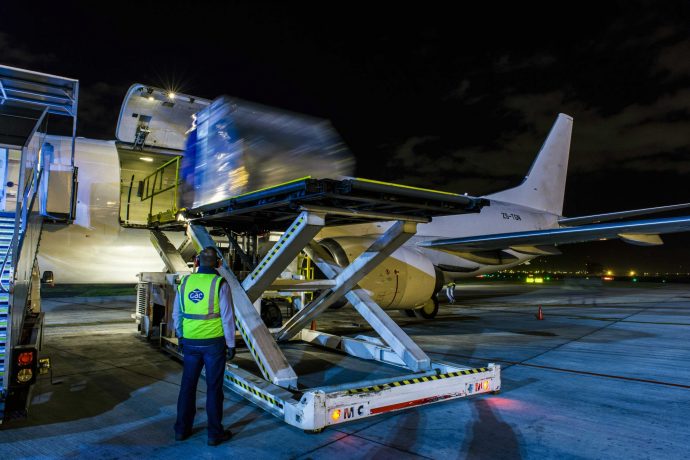After months of stagnation and international anxiety surrounding heavy lockdowns in Shanghai, the Chinese port city is now on a road to recovery, albeit with the threat of lockdowns still weighing heavy on the population amid the emergence of new sub-variants in recent weeks. And while the GAC Group is now experienced in navigating lockdowns in various forms worldwide, the restrictions imposed in Shanghai earlier this year posed new challenges.
Beginning earlier this year with an abrupt surge in Covid-19 infections, Shanghai soon accounted for 80% of China's daily cases. The authorities responded by putting its 25 million residents into total shutdown from 14 March to 1 June to mitigate the spread.
The initial local impact was immense. Almost every sector of Shanghai's economy was halted. Only essential workers were allowed to leave their homes, factory employees were forced to live on-site in a 'closed-loop’ system, and all other businesses shut.
This magnified worldwide trade disruption. Shanghai is China's most productive city, handling 20% of its international trade, and is the world’s largest port– a major artery for global business. Multinationals like Apple, Tesla, General Electric, Amazon, and Adidas warned that the standstill was choking their supply chains. According to online freight operator Freightos, 45% of Shanghai's trucking capacity was lost between March and May.
International reaction to the disruption urged a revised approach from Beijing. The European Chamber of Commerce, uneased by the impact on European firms, called for a more vaccine-centric epidemic prevention plan as opposed to mass quarantine.
While China's approach could be seen as prioritising case reduction over economic health, the policy was not chaotic for its own sake. On the contrary, serious concern and attention were given to ensuring that output remained stable to the extent that it could continue.
Always on the move
As an established shipping and logistics services provider in the country, GAC China was granted special permits to continue cargo movements amid the supply chain freeze, so long as they adhered to additional safety regulations.
GAC maintained consistent transits during the two-and-a half-month lockdown. Instead of reducing deliveries, our Automotive Logistics teams continued to facilitate the movement of critical components from Europe, America and Asia to factories in China.
Unobstructed operations helped keep much of Shanghai's automotive operations above water, but that service can be traced back to last year. Since 1 December 2021, GAC has been running five charter flights between Europe to China. As the exception to an essentially frozen supply chain, component makers for passenger cars and commercial vehicles as well as 1st Tier Suppliers turned to this charter solution.

Elias Mandas, Group Marketing Manager - Automotive at GAC, says GAC’s resilience and reliability also helped win new clients from the automotive industry.

"Our people were able to make that last mile delivery all the way to the factories, while most of our competitors were only able to handle the shipments up to the airport, port or railway station," he adds.
Madness in method
Chinese authorities have now opted for a defibrillator approach to try to stimulate the economy. A massive fiscal stimulus is reportedly on the horizon, with the Ministry of Finance potentially allowing local governments to sell 1.5 trillion yuan ($220 billion) of special bonds this year.
In Shanghai specifically, 50 measures have been announced to aid businesses post-lockdown recovery, including several tax breaks, consumer spending subsidies, support for companies maintaining their headcount, and waving of reopening permits.
Despite this, overall recovery is still lagging. Tesla's Shanghai factory, for example, is still only at 70% capacity due to labour and supply chain problems.
According to the National Bureau of Statistics of China, manufacturing and services saw a small increase from April to May, but these areas are still diminished. Projections indicate that this year's national 5.5% GDP growth targets will likely fall short by more than 2%.
Plenty of state resources have been mobilised for the economic resuscitation, but some firms have robustness upon which the local economy can base its recovery.
While the Shanghai lockdown is currently eased, the zero-Covid policy remains very much in place. Uncertainty still overshadows all business operations in the country. Even with new stimulus measures aimed at repairing China's economy long-term, the kind of planning and execution showcased by firms like GAC over the last three months will be essential to navigating an unpredictable future.
